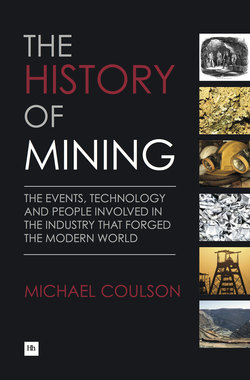Читать книгу The History of Mining - Michael Coulson - Страница 51
На сайте Литреса книга снята с продажи.
Craftmanship
ОглавлениеAs to the methods used by the Indians of South America to work the gold into the artefacts and jewellery which the Conquistadors accumulated, it appears that they were not so very different from those employed by the Egyptians and the Chinese centuries earlier. Whether there was any collaboration, as some observers have speculated, between the Chinese and the Indians on either side of the Pacific is unknown although it seems unlikely, if not impossible, due to the huge distances needed to travel and the lack of evidence.
Nonetheless some of the techniques the Indians used were not unique to them; in particular the lost-wax method where a craftsman carves his design onto a piece of wax, which is then covered by a layer of moist clay. The clay is then fired in a furnace. As the wax core melts and the clay layer with the design imprinted on it hardens, a hollow core emerges into which gold and copper are then poured. The clay is then removed from the furnace and the gold hardens and takes on the shape of the clay design. When it is finished the clay layer is removed to reveal the gold object. At this stage the copper is then removed by scouring and the gold artefact is then finished by the craftsman. Similar techniques were used to make silver objects.
Whilst the Indians’ artefacts were in many cases both beautiful and complex the Conquistadors were not much interested in the quality of the workmanship but rather in the quantity of the gold bound for Spain – they melted down the jewellery and artefacts, thereby losing priceless objects. This turning of art into dross, even gold dross, was echoed several centuries later when many valuable silver artefacts were sold by their owners as scrap for cash as the underlying metal price soared crazily in the early 1980s; the value destroyed by this exercise was huge.
